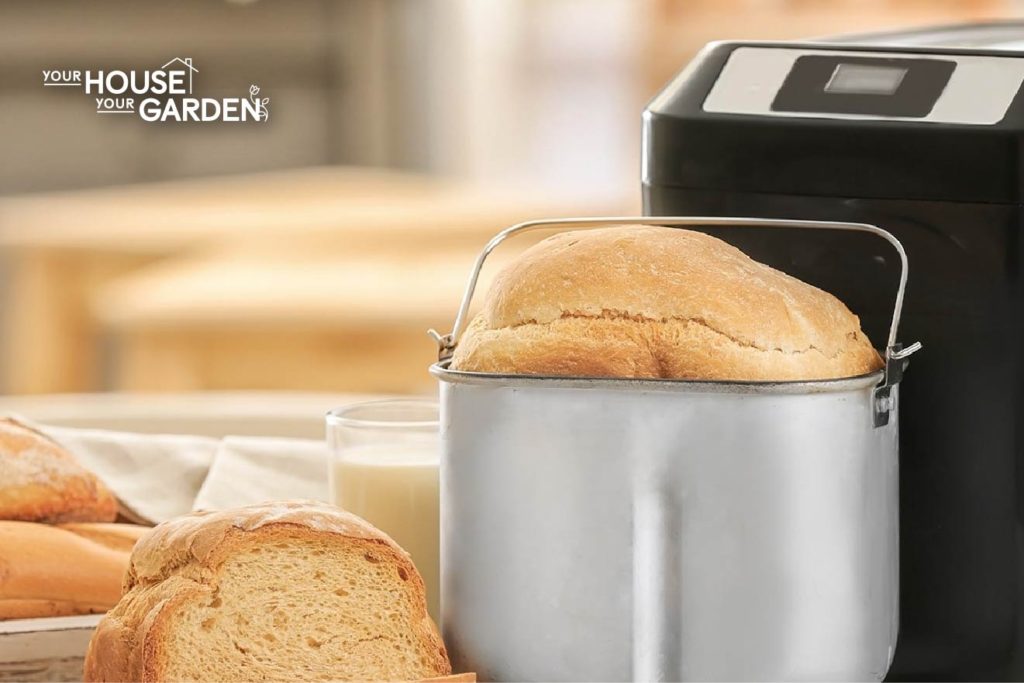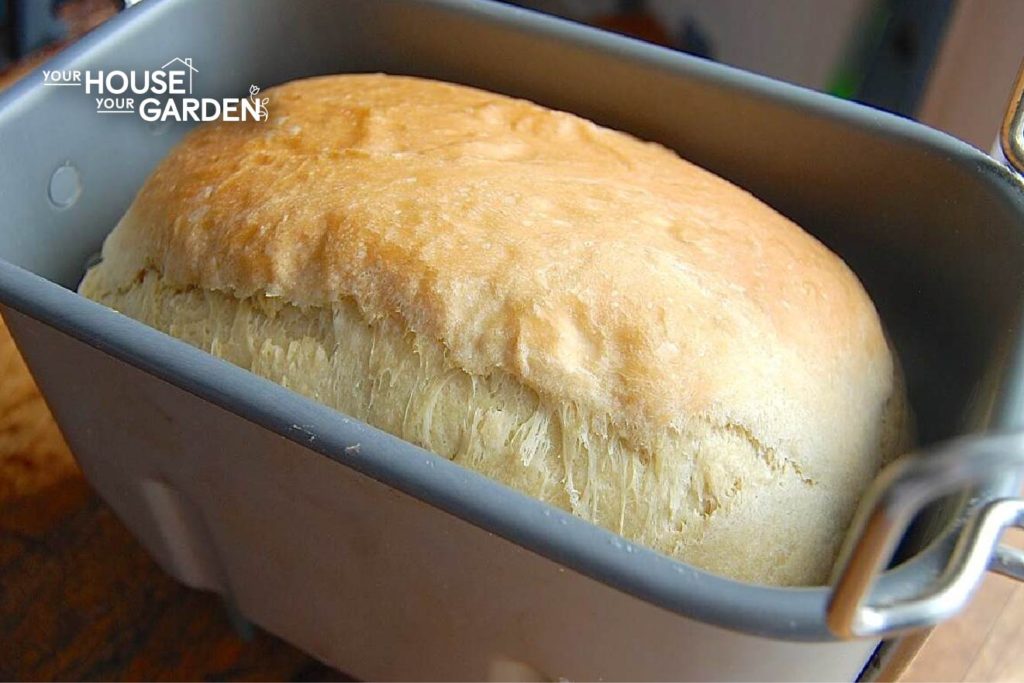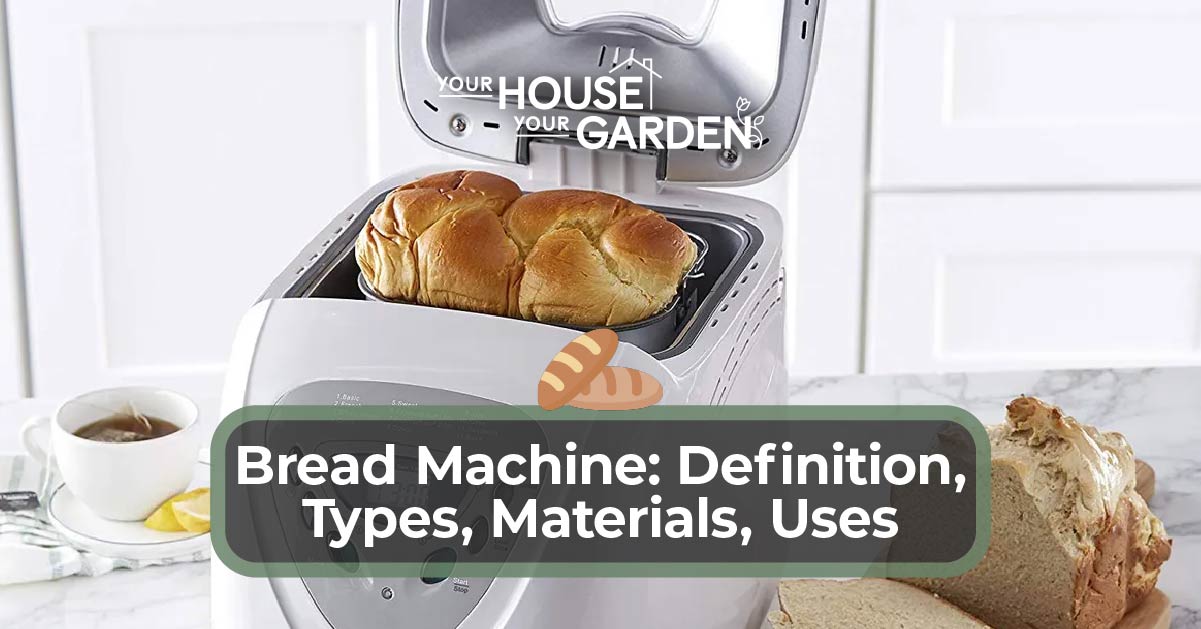A bread machine is a small appliance used to turn raw materials into baked bread. Bread machines come in a rectangle shape with a bread pan and pull-out paddle.
The most common type of bread machine is a stainless steel bread machine. Stainless steel bread machines are preferred because they are durable, resistant to high heat, and provide even baking to prevent ingredients from burning. Plastic and glass bread makers are also available. Plastic is the cheapest type of bread machine but wears out the fastest. Because stainless steel bread machines last longer than other types of bread makers, they are also more expensive.
The history of the bread machine begins in the 1800s. The first bread machine was used to crumble stale bread. The bread machine has since been adapted into a multi-purpose oven that bakes bread and other ingredients.
Materials for Bread Machine
The best material for a bread machine is stainless steel. Stainless steel bread machines are more durable and last longer than other types of bread machines, like glass or plastic. Material is important when choosing a bread machine because it affects taste, safety, durability, and food quality.
Glass bread machines are more durable than plastic bread machines but heavier and more prone to breaking. Plastic is the cheapest type of bread machine but wears out faster than stainless steel or glass machines, meaning it has to be replaced more frequently. Stainless steel bread machines are also preferred for consistent heat properties to avoid burning ingredients.
People who are concerned about the health effects of their bread machine may want to consider a stainless steel bread machine made without BPA materials. There have been reports of plastic or Teflon bread machines peeling, which can flake into the dough.
Types of Bread Machine
Here are 6 types of bread machines:
- Adjustable bread machine: An adjustable bread machine lets you adjust the size of your loaf.
- Programmable bread machine: A programmable bread machine has pre-set features that can automatically turn the unit off when the bread is done baking.
- Delayed start bread machine: A delayed start bread machine allows you to set the start time, temperature, and cooling time, ensuring your bread is ready right when you want it.
- Jam maker bread machine: A bread machine with a built-in jam maker means you can bake your bread and cook jam at the same time.
- Rapid bread machine: A rapid bread machine uses a stronger motor to bake bread faster.
- Non-stick bread machine: A non-stick bread machine is made with non-stick coating properties to prevent the bread from sticking to it during baking.
Sizes of Bread Machine
Bread machines come in all different sizes and shapes to accommodate your baking preferences. The ideal size of a bread machine depends on the frequency in which you cook bread, and how many loaves you cook at one time. These are the standard sizes of bread machines:
- Small bread machine: Small bread machines are capable of baking bread loaves up to 1.65 pounds.
- Medium bread machine: Medium bread machines are capable of baking bread loaves up to 2.4 pounds.
- Large bread machine: Large bread machines are capable of baking bread loaves up to 3.5 pounds.
What size bread maker do I need? Bread makers are capable of baking loaves between 1 to 3.5 pounds. A traditional two-pound loaf of bread makes between 14-16 slices of bread, which is suitable for 2-4 people. If you frequently make bread for a larger household, you may want a larger bread machine.
Does Size Affect Bread Machine’s Usage?
The size can directly affect how you use your bread machine. Smaller bread machines may not be large enough to accommodate some recipes, especially ones with a lot of ingredients. Larger bread machines may not be suitable for smaller batches of bread since you have to fill the loaf pan fully.
Use Cases of Bread Machine
A use case of a bread machine can be described as a specific way in which you use it to bake bread or other oven items. A few use cases of bread machines include:
- Fresh loaves of bread
- Pizza dough
- Pretzels
- Rolls and biscuits
- Banana bread
- Hotdog or hamburger buns
- Challah bread
- Cinnamon rolls
- Garlic bread
- Hot cross buns
- Doughnuts
Once you learn how to use a bread machine, you’ll find that it has many uses beyond baking loaves of bread. Bread machines are similar to a mini-oven and can make other items.
Do Bread Machines Have Health Benefits?
Investing in a bread machine can offer you health benefits, like the ability to bake fresh bread using healthier ingredients. Bread sold in stores often contains sugar and other additives to preserve it for longer shelf life. With your own bread machine, you can use fresher, healthier ingredients to bake fresh bread at home. Some types of bread, like oatmeal or rye bread, may also be harder and more expensive to find in stores.
Most Known Bread Machine Brands
A few of the best bread machine brands right now include:
- Best overall bread machine brand: Breville
- Best budget bread machine brand: Oster
- Best programmable bread machine brand: Breadman
- Best compact bread machine brand: Cuisinart

Bread Machine Lifespan
The typical lifespan of a bread machine is an average of 10 years. Bread machines are capable of lasting a long time if you choose a quality one and properly care for it. The factors that may affect how long your bread machine lasts include:
- Initial quality: The initial quality of your bread machine will affect how long it lasts. A stainless steel bread machine will usually last longer than a plastic bread machine.
- Maintenance and cleanup: Keeping up with routine maintenance and cleaning can help your bread machine last longer. This includes cleaning bread crumbs out from the tray.
- Frequency of use: The frequency in which you use your bread machine affects its longevity. Bread machine parts like the paddle and basket may wear out faster.
- Storage habits: Where you store your bread machine in between uses can affect how long it lasts. Store your bread machine in a cupboard with plenty of space for the best results.
The average cost of a bread machine is between $100 and $150. The material and size of the bread machine affect its price. Larger, stainless steel bread machines cost more than smaller, plastic bread machines. The brand name of the bread machine can also affect price, with brands like Breville and Breadman being on the higher end of the price range.
How Does Culture Affect the Usage of Bread Machines?
The first bread machine was invented in Japan, but it never took off in countries outside of the United States. The United States, United Kingdom, and Australia are the countries that use the bread machine most often. The bread machine has primarily been used for residential use, as they are not typically large enough for commercial use.
Relevant Kitchen Tools to a Bread Machine
Some kitchen tools are similar to a bread machine, including:
- Dough maker: A dough maker and a bread machine both are used to bake loaves of bread. A dough maker differs from a bread machine because its primary purpose is to mix ingredients together to make bread dough and a bread machine’s primary purpose is to bake raw ingredients into bread.
- Wall oven: A wall oven and a bread machine both bake ingredients. A wall oven is different from a bread machine because it’s a much larger, permanent appliance, whereas a bread machine is much smaller and can be stored away in the cupboards in between uses.
- Mixer: A mixer and a bread machine are both appliances that mix ingredients together in preparation for baking. A mixer is different from a bread machine because it’s not capable of baking ingredients, whereas you can use a bread machine to bake raw ingredients and turn them into an edible loaf.
- Easy bake oven: An easy bake oven and a bread machine are both capable of baking ingredients. An easy bake oven is different from a bread machine because it’s limited to the items it can cook with fewer settings and heat features and a bread machine can bake fresh loaves of bread.
Difference Between a Bread Machine and an Oven
The primary difference between a bread machine vs. an oven is the baking capabilities. While it’s possible to bake bread using the oven, the texture is very different than when using a bread machine. A bread machine is capable of baking soft and light bread.
Another difference between a bread machine and an oven is the portability of each kitchen appliance. A bread machine can be stored away in the cupboard in between uses, whereas the oven is a large, permanent kitchen appliance that may take longer to pre-heat.
Features of a Good Bread Machine
Here are a few features that make the best bread machines:
- Loaf size: You want to choose a bread machine that accommodates your baking preferences. Bread machines come in different sizes with small, medium, and large loaf capabilities.
- Keep warm setting: A keep warm setting can keep your bread loaves warm until you’re ready to serve them.
- Crust settings: Some bread machines come with crust settings that let you control the crisp level.
- Viewing window: A viewing window lets you view your bread and monitor its baking progress.
- Fruit or nut dispensers: Bread machines with fruit or nut dispensers automatically add ingredients to the dough while baking.
- Fast-cooking: A bread machine with fast-cooking settings means you can bake fresh loaves faster.
- Programmable settings: Bread machines with pre-set timers let you experiment with different baking styles. Some machines also come with special settings like gluten-free.
- Pan shape: Most bread machines come with a rectangle pan shape. Some bread machines have different pan shapes that can change the loaf size or shape.
Components of a Bread Machine
A bread maker includes the following parts:
- Control panel: The control panel is what powers the bread machine.
- Machine lid: The lid is what holds the ingredients inside of the unit.
- Removable bread basket: The removable bread basket is where you place the ingredients to bake.
- Baking chamber: The baking chamber is the part of the bread machine that heats up and bakes the bread.
Repair Options for a Bread Machine
If certain parts of your bread machine stop working, you may be able to replace them rather than replacing the whole unit. Here are a few replaceable parts of a bread machine:
- Heating element: The heating element is the part of the bread machine that supplies power and heat to the appliance. If your bread machine stops heating, you may need to replace it.
- Paddle: The paddle is the continually moving part that paddles the dough until it’s ready to rise. This part may wear out from time to time but can be easily replaced.
- Basket: The basket is where you place your bread ingredients. If dough burns in the basket, it may peel and need to be replaced.
- Lid: The lid covers the dough ingredients and stops them from boiling outside of the appliance. If the lid gets burnt or starts to peel, you may need to replace it.
Difference Between a Bread Machine and a Stand Mixer
The biggest difference between a bread machine vs. a stand mixer is the intended purpose of each appliance. A bread machine is designed to bake raw ingredients into a fresh loaf of bread, whereas a stand mixer mixes ingredients together without cooking or baking them. Both appliances can be useful when baking bread. First, you can use the stand mixer to combine ingredients like flour and milk, and then you can use the bread maker to turn the raw ingredients into a bread loaf.
Another difference between a bread machine and a stand mixer is the size of each appliance. A stand mixer is usually a lot larger than a bread machine unless you choose a larger capacity bread machine.

Bread Machine Name Origin
The name of the bread machine comes from its ability to make bread. A bread machine works as a mini-oven, baking raw ingredient into fresh bread.
You can spell bread machine as: B-r-e-a-d m-a-c-h-i-n-e.
To pronounce bread machine, say: (Bred mah-sheen).
Bread Machine History
The history of the bread machine dates back to the 1800s. Joseph Lee is credited with inventing the first bread machine in history. The purpose of this antique bread machine was to crumble day-old bread so that it could be used in other recipes. Before the invention of the bread machine, people would throw out bread after a day.
Lee took the money he made from the day-old bread crumbler and used it to create an automatic bread machine. This machine made making bread faster and more hygienic. Large bakeries used the machine to increase their sales. It wasn’t until the Japanese company, now Panasonic made a smaller bread machine that could make one loaf of bread. By 1986, many households had their own bread machines. Today, the bread machine is used for many more tasks than making bread.

